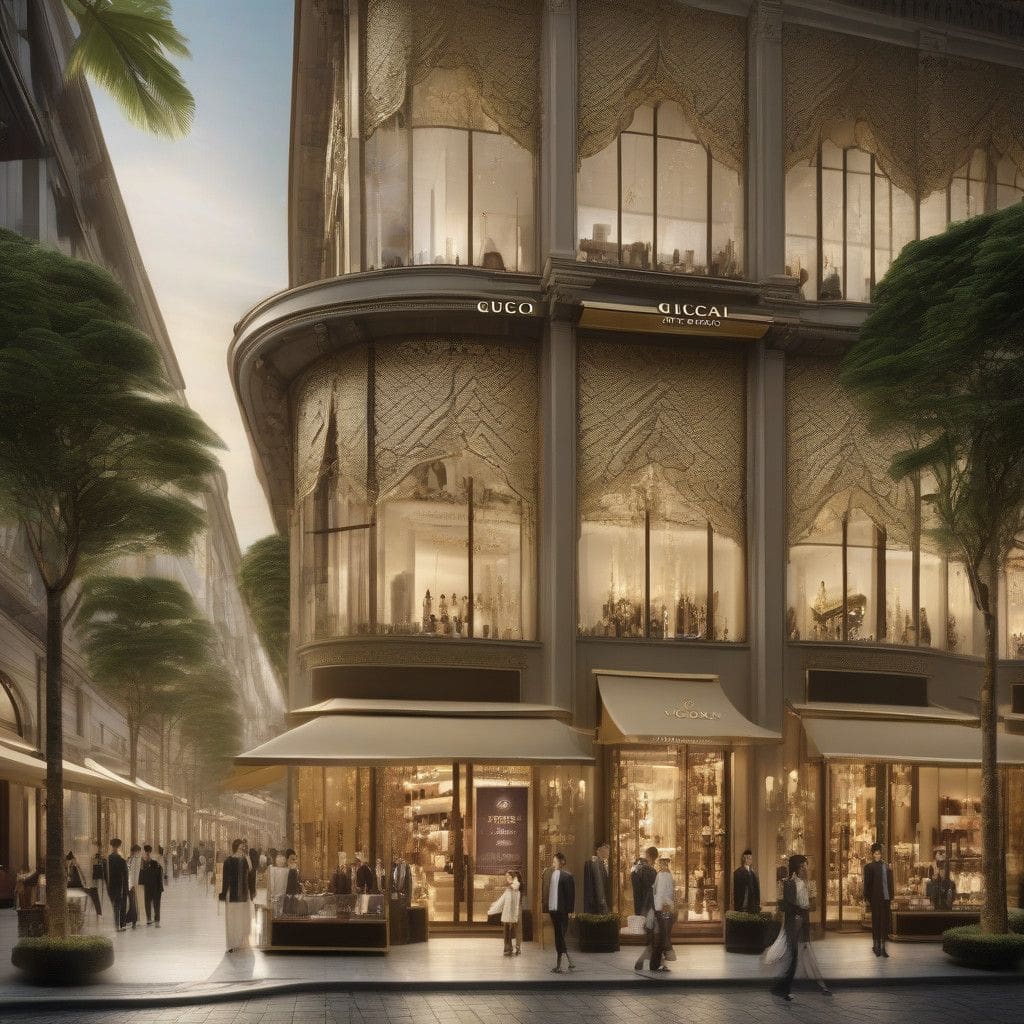Thailand’s luxury retail scene is on the rise, with the introduction of a spectacular new shopping precinct, One Bangkok, which is set to contribute significantly to the country’s economic landscape. This ambitious $3.2 billion project, located in the capital’s diplomatic quarter, illustrates the growing demand for high-end shopping options, driven by both international tourists and affluent locals.
One Bangkok is notable for being one of the largest property developments in Thailand, encompassing 17 hectares and featuring a diverse range of facilities, including three interconnected shopping centers, hotels, office spaces, and residential towers. The project connects the bustling business districts of Sathon and Silom with Rama IV Road, positioning it as a strategic destination for both high-end retailers and shoppers.
On October 25, 2024, the project made headlines with a grand opening ceremony that attracted over 10,000 guests. The event was accompanied by live performances from international artists, including Thai superstar Krit Amnuaydechkorn, who is also the brand ambassador for Balenciaga. This launch marks the beginning of a transformative period in Thailand’s retail landscape, making it necessary for established malls like Siam Paragon, Gaysorn, and Central Embassy to rethink their strategies to compete effectively.
Thailand’s personal luxury goods market is projected to reach an impressive $2.4 billion in retail value this year, growing at a compound annual growth rate (CAGR) of 9 percent through to 2029. This growth can be attributed to an increase in both domestic demand from Thailand’s wealthy residents and the influx of international tourists eager to experience luxury shopping in the region.
Notably, the demographics of affluent shoppers in Thailand are changing. While foreign visitors play a significant role in the luxury market, local consumers, particularly the ultra-high-net-worth individuals (UHNWI) — those with assets exceeding $30 million — are increasingly driving retail growth. According to property consultancy Knight Frank, the number of UHNWIs in Thailand is expected to rise by approximately 14.7 percent by 2028, reinforcing the country’s status as a significant luxury market within Southeast Asia.
The establishment of One Bangkok is not only set to enhance the luxury shopping experience but also symbolizes a shift in consumer behavior. Retailers have noted a growing trend toward duplexes and triplexes within shopping malls, underscoring the need for spaces that can accommodate more luxury brands and cater to the evolving preferences of shoppers. Early openings in One Bangkok include Club 21, showcasing high-profile brands like JW Anderson and Jacquemus, as well as other regional and international names.
Additionally, the influence of local culture and rising Thai celebrities is transforming the landscape of luxury retail in the country. Thai actresses and pop stars have become significant figures in promoting luxury products, driving interest among younger generations. This phenomenon escalates as these celebrities increasingly partner with international brands, further intertwining pop culture with luxury consumerism.
Traditional retail giants are also adapting to these market changes. For example, the Siam Piwat group has made substantial investments to unveil several flagship stores in existing malls, including the first Dolce & Gabbana concept store in Southeast Asia and new offerings from Gucci and Casablanca. The operators are not only expanding luxury boutique offerings but are also prioritizing experiential retail to attract customers and enhance overall shopping experiences.
In addition to expansion in Bangkok, significant investments are ongoing in tourist hotspots like Phuket and Hua Hin. The Central Group, known for its vast portfolio of malls, has targeted investments of roughly 15 billion baht ($461 million) over the next five years for projects outside the capital, including a new mixed-use development in Krabi.
Moreover, tourism plays a pivotal role in boosting Thailand’s luxury market. The country targets approximately 40 million foreign arrivals in the coming year, aiming for a record tourism revenue of 3.4 trillion baht ($101 billion). The already strong connections with close neighboring nations, such as Cambodia and Laos, enhance the appeal of Thailand as a luxury shopping destination.
The ability of Thailand to attract shoppers globally is evident as diverse nationalities seek unique luxury experiences. The Chinese, Indian, Russian, and Arab markets contribute significantly to luxury sales, aided by Bangkok’s strategic geographic positioning. Moreover, as luxury brands adapt to changing tourist demographics and preferences, they are increasingly establishing outlets beyond the capital city.
In summary, Thailand is rapidly evolving into a luxury retail powerhouse, driven by substantial investments in infrastructure and changing consumer dynamics. With developments like One Bangkok leading the way, the Thai luxury market is set for remarkable growth. As local and international brands continue to engage with an increasingly affluent consumer base, both traditional and emerging shopping venues must adapt to thrive in this competitive landscape.












